In a first for California, Sacramento poised to allow apartments in single-family home neighborhoods
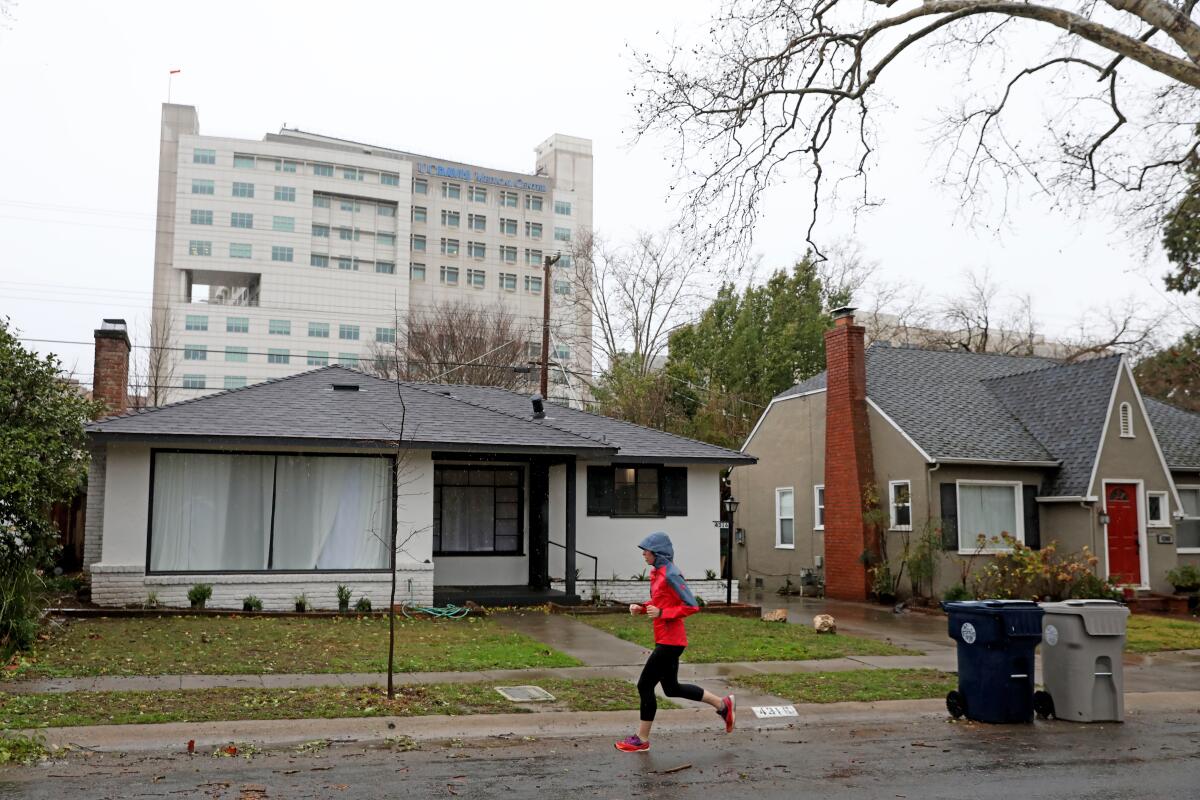
Ringing downtown just a quick bike ride from the state Capitol building are some of Sacramento’s most upscale neighborhoods. There’s Land Park, a leafy community of well-maintained homes that surround 167 acres of urban parkland. And there’s the Fabulous 40s, with its blocks of stately homes on deep lots, including the big blue house from the film “Lady Bird” and the six-bedroom home that the Reagans lived in during the early part of Ronald’s gubernatorial tenure a half-century ago.
The neighborhoods’ exclusivity and desirability owe, in no small part, to their zoning: single-family residential.
That could soon change.
In an unprecedented move, Sacramento is on the verge of approving a plan that would make the city the first in California, and one of the first in the country, to end zoning that permits only one single-family home on a property.
Under the proposal, up to four homes could be built on lots in neighborhoods long defined by their low-density, traffic-free tranquillity.
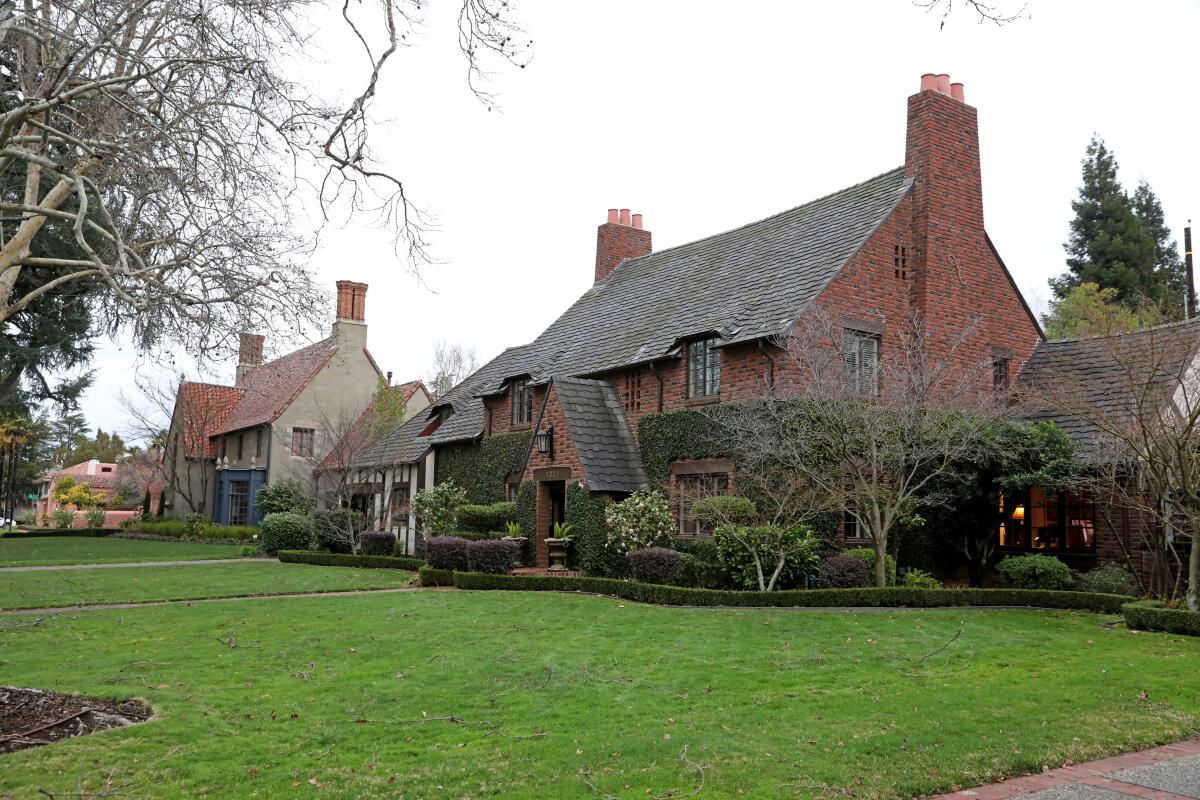
Sacramento’s effort to dramatically alter its streetscape reflects the capital city’s rapidly broadening identity. Once dominated by state government, Sacramento has seen a huge influx of people and employers in healthcare and technology — including San Francisco Bay Area workers willing to live remotely or make the 90-mile drive to the office in exchange for cheaper living.
The migration has bolstered the city’s arts and cultural scene, but rents have gone up by double digits and rising homelessness has prompted protests over deteriorating conditions for people on the streets.
Backing the zoning proposal is Sacramento’s Democratic mayor, Darrell Steinberg, and a coalition of activists that includes white-collar renters who fear the kind of spiraling housing costs that many left behind in the Bay Area. The group, House Sacramento, is part of a network of organizations across the state called Yes in My Backyard, or YIMBY, that push for similar measures.
“Sacramento should be a pioneer in saying ‘yes’ to more homes for all,” the organization wrote last month to the City Council.
Steinberg, whose home was recently damaged by protesters demonstrating against homelessness, argues major changes to ensure the city’s long-term affordability are needed to avoid the Bay Area’s fate.
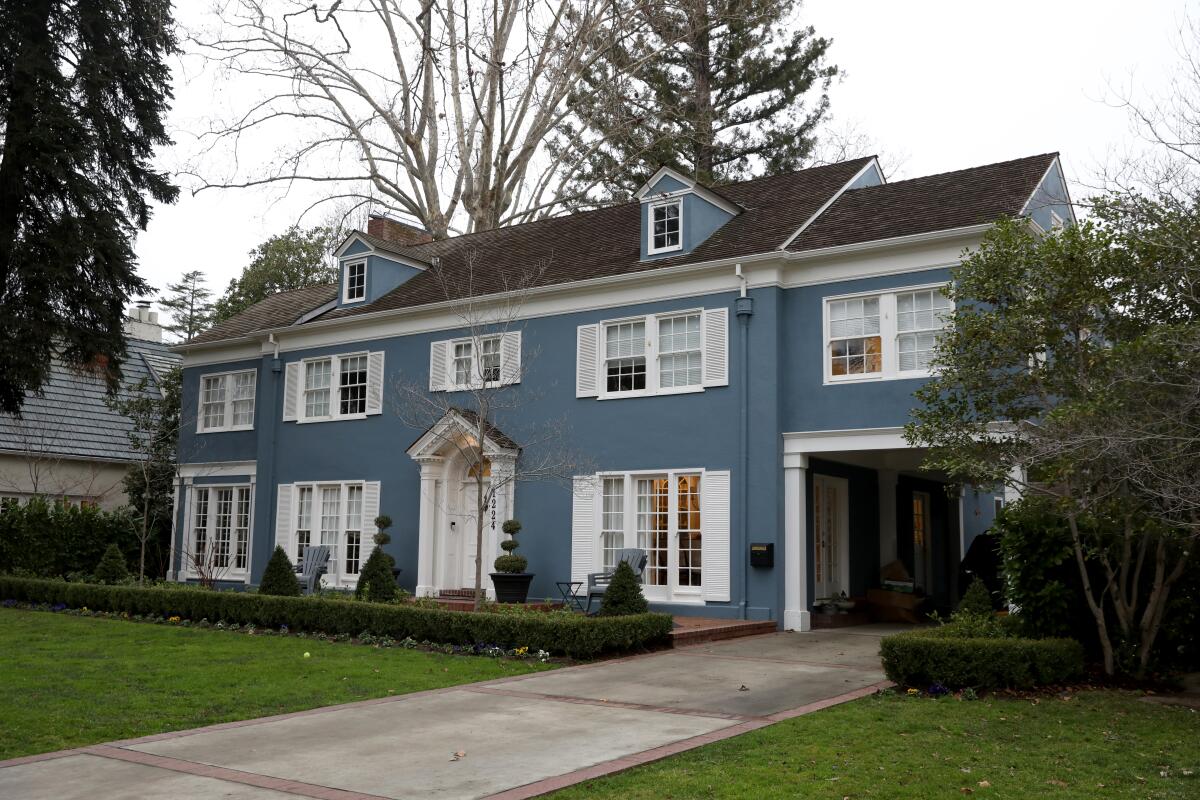
“Our challenge is housing,” Steinberg said. “I not only take pride in the fact that we’re leading — I insist on it.”
A “Don’t Become San Francisco” mantra also motivated Oregon lawmakers in 2019 when they voted to end single-family home zoning across the state’s urban areas, including Portland. The city of Minneapolis started the trend the year prior by becoming the first major U.S. city to eliminate single-family home only zoning.
So far, Sacramento has not seen the intense negative reaction from homeowners that led to the demise of other efforts to upend single-family home zoning in California. But some residents say that’s only because most residents remain unaware of what’s going on.
Standing on a narrow street in Elmhurst, Maggie Coulter worried about increased traffic, where new residents would park and that lower-density communities like hers would all become like the city’s more busy and bustling areas that she avoided when she bought her home 40 years ago.
“We do need housing diversity,” said Coulter, a retiree in her 60s who used to work on affordable housing programs at the state Department of Housing and Community Development. “We don’t need urban sprawl. But to basically destroy these historic neighborhoods to make them all uniform, that doesn’t make sense either.”
Coulter, president of the neighborhood association in the century-old community, expects a backlash once details of the plan become better known in a city where most communities would fall under the proposal. Currently, nearly half of all land in Sacramento — and 70% of its residential areas — is set aside for single-family homes, percentages similar to those in other big California cities.
The city’s plan would still permit single-family home construction in these communities, and any larger buildings would have to comply with existing height restrictions. Already, because of state and local laws, single-family home owners can add smaller backyard units and garage conversions on their properties.
The city has no formal estimate on how many new homes — either through new construction or the subdivision of existing single-family homes — the proposal would create, but officials believe it’ll be fewer than 100 a year.
Nevertheless, activists and leaders hope that the idea will help tame housing cost increases that were unthinkable in Sacramento until the recent influx of Bay Area residents boosted demand to live here. The city’s popularity has been bolstered in recent years by a new NBA arena, plans for professional soccer and, most notably, “Lady Bird,” the 2017 Oscar- nominated movie that highlighted Sacramento’s unpretentious charm.
Over the last four years, Sacramento’s median home values have jumped by more than a third to just under $400,000, according to real estate firm Zillow. At the same time, according to Apartment List, median one-bedroom rents are up more than 20% to $1,195 a month — a figure that’s continued to increase during the COVID-19 pandemic even as average rents in San Francisco and Silicon Valley have plummeted.
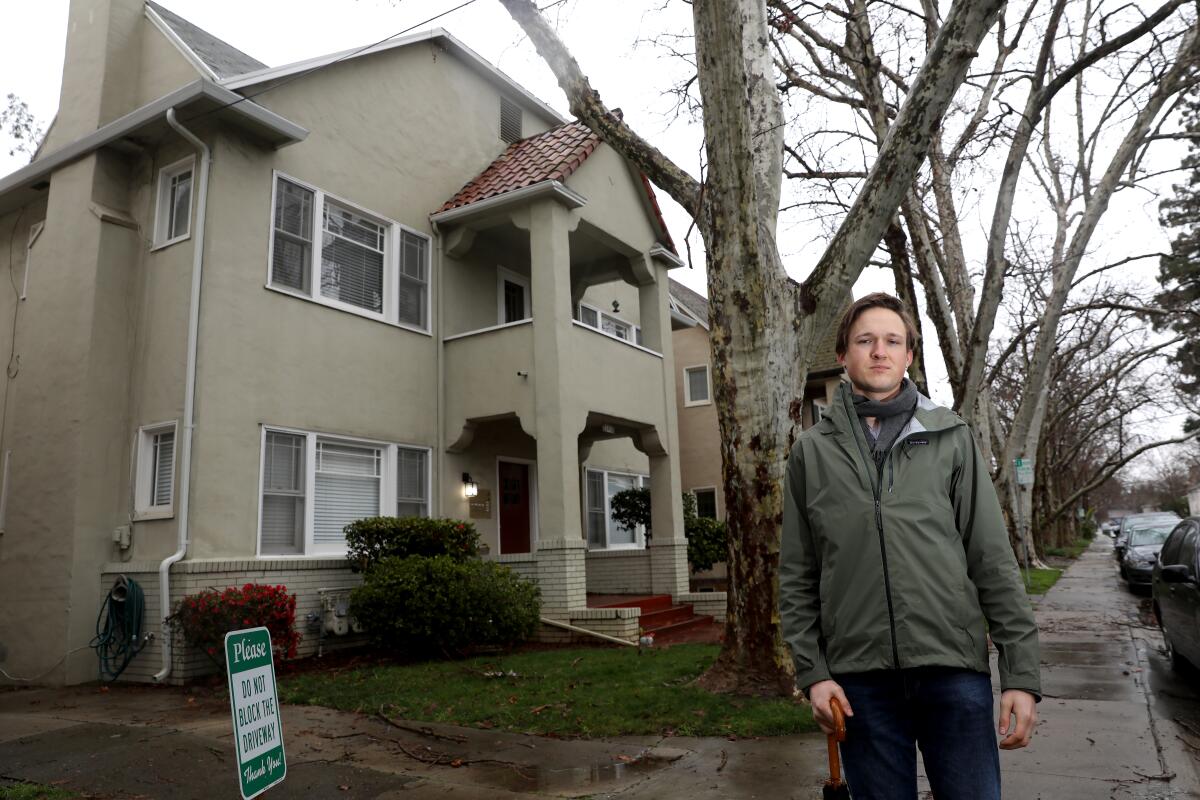
Some of Sacramento’s newcomers banded together four years ago to start the YIMBY group, which stands in contrast to opponents of growth, whom they deride as Not in My Backyard or NIMBY groups. Ansel Lundberg, the co-leader of Sacramento’s organization, moved to the city in 2015 for a fellowship in state government after graduating from UC Santa Barbara.
A few years ago, Lundberg and his now-wife, a medical student, began renting a home about a couple of blocks from the Fabulous 40s in East Sacramento. He loves that the neighborhood gives them access to restaurants, their church, their jobs and downtown without the need to drive.
“There’s no reason more people shouldn’t be able to live here,” said Lundberg, 27, who works for the local electric utility.
The concerns of long-established residents over property values and community character issues are outweighed by the hardships of tenants faced with rising rents, Lundberg said.
“Whatever [homeowners’] concerns are about their property values, which I think are misplaced, that just doesn’t resonate with us,” he said.
Lundberg and other activists point to the history of single-family zoning as another reason to make the change.
East Sacramento and Land Park are among neighborhoods where racist real estate practices and government-sponsored mortgage lending rules prevented nonwhites from moving in through the middle of the 20th century. Indeed, zoning that only allowed for single-family homes was initially pushed by those who wanted to segregate their communities after the U.S. Supreme Court ruled that zoning that explicitly barred Black residents and other people of color was unconstitutional.
Today, the two communities remain overwhelmingly white.
“The Land Parks and the East Sacs are beautiful communities because they were segregated communities,” said Kendra Noel Lewis, executive director of the Sacramento Housing Alliance, an affordable housing advocacy group in favor of the zoning change. “For people not to acknowledge that they inherited that, that they inherited the benefits that came with that, it’s really incumbent on activists, policymakers and the politicians to say it and to change it.”
But those opposed to doing away with single-family home zoning don’t believe that the proposal will integrate neighborhoods, racially or economically. They argue that any new fourplexes in higher-income neighborhoods are likely to be more costly to rent or buy as condominiums than what the average Sacramento resident can afford.
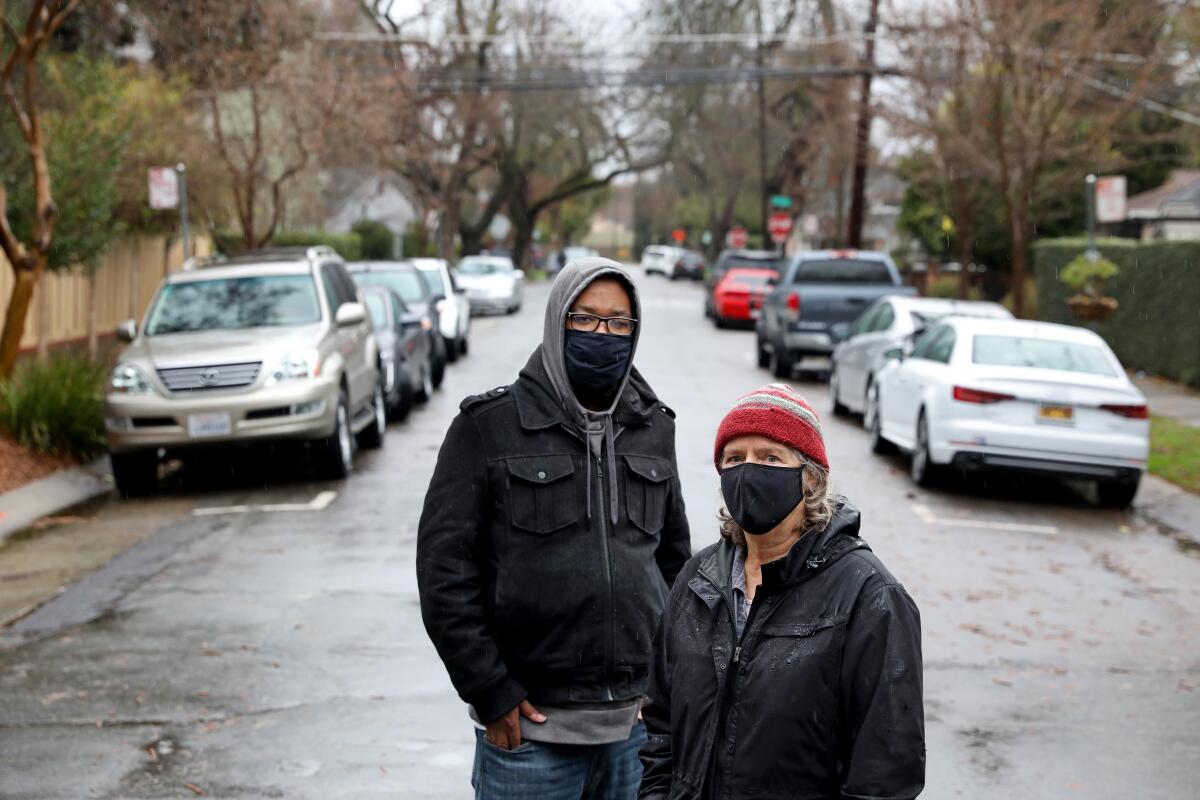
A better solution, some argue, is to invest in lower-income communities so that they have the same access to grocery stores, good schools and public services as wealthier neighborhoods.
“We want to see every neighborhood in Sacramento be a place where a young family would say, ‘That’s a nice place to live,’” said Chris Jones, 34, an IT worker and homeowner in the city’s Colonial Heights area. “By trying to cram people into existing single-family neighborhoods, it lets you off the hook for improving other neighborhoods.”
There’s still a lot of time for Sacramento’s zoning debate to play out. Last month, the City Council gave unanimous approval to a preliminary version of the plan, but city officials don’t expect to receive final sign-off until the end of the year. Nevertheless, there appears to be momentum toward similar changes elsewhere.
Other Northern California cities, including San Jose, San Francisco and Berkeley, are now considering allowing more homes in some single-family neighborhoods. And state lawmakers are once again weighing a proposal to allow duplexes on single-family home parcels across much of the state.
Still, Sacramento’s overall effort to increase development, including the change to single-family home zoning, “is way beyond what any other city has done,” said Chris Elmendorf, a UC Davis law professor who follows statewide development regulations.
“It’s kind of amazing what Sacramento is doing at this point,” he said.







